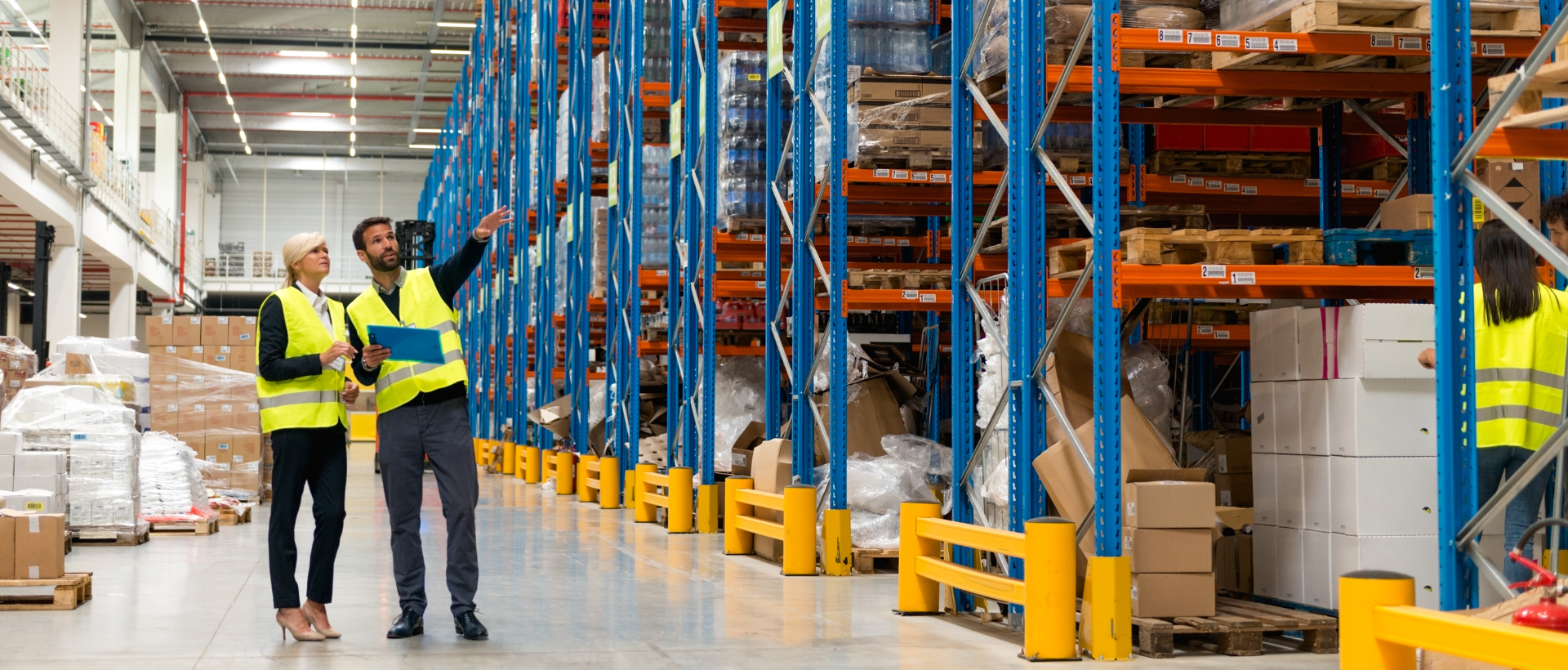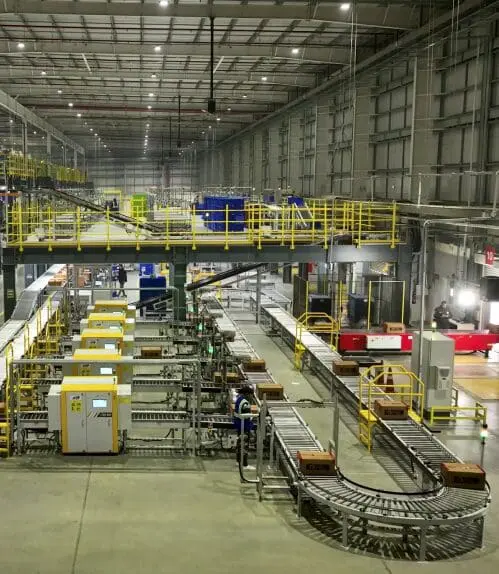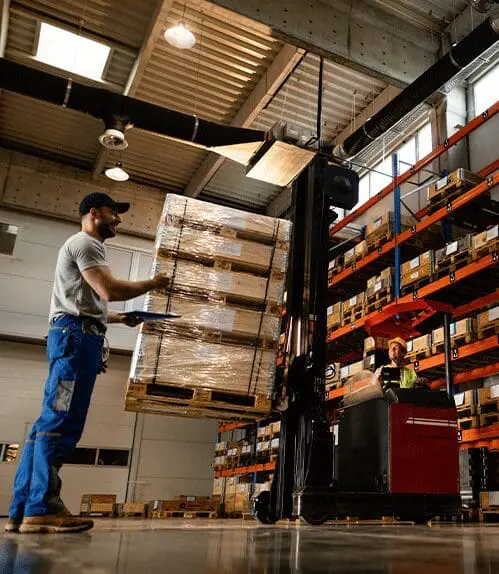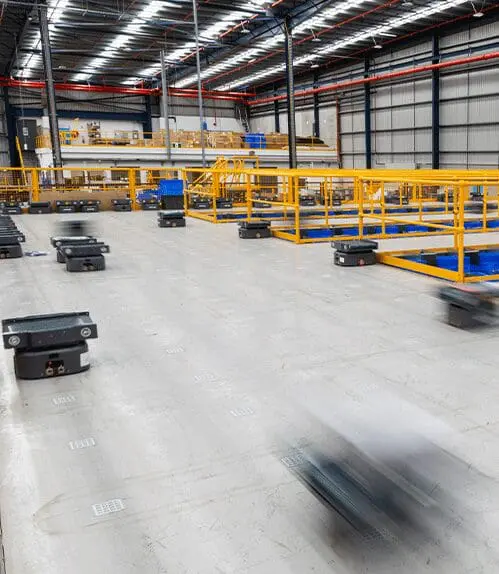Table of Contents
In this blog, we will examine the shortcomings of traditional warehouse picking machinery and consider how these difficulties may affect the effectiveness of operations.
From increased labour costs to reduced flexibility, we examine businesses’ key drawbacks when relying on conventional material handling and order fulfilment methods.
As we navigate these challenges, we introduce a smart alternative: Addverb’s autonomous mobile robots.
By investing in Addverb’s innovative solutions, businesses can overcome the limitations of traditional warehouse equipment and achieve optimal results with our state-of-the-art robots.
Limitations of Conventional Warehouse Picking Equipment
Physical Strain from Warehouse Order Picking Carts
When a “person-to-goods” methodology is used in traditional warehouse operations, employees must physically traverse the warehouse floor to retrieve things for order fulfillment. Warehouse order picking carts are frequently used in this operation; personnel manually move the carts to move the chosen items.
Although this method has been widely used in the business, it has several drawbacks, especially regarding the physical toll it takes on the workers. The repetitive task of repeating this process may lead to ergonomic strain, fatigue, and stress among the workers, which are exacerbated by prolonged hours of standing and working.
Furthermore, this can lead to decreased productivity and increased time to fulfil orders, as they have to move around at a pace that can lower their speed.
Besides, the workers have to memorize the item locations, which can eventually increase their mental stress. It leads to operational repercussions in the warehouse and increases absenteeism, high turnover rates, and compensation claims.
Addverb’s “Person-to-goods” automation can help reduce workers’ strain by providing directions to their desired packages and products. Our Pick-to-Light (Rapido) and Pick-by-Voice (Zesty) can help you improve your worker efficiency while boosting their mental health by not being required to remember physical locations.
Limitations and Inefficiencies of Barcode Scanners
Barcode scanners are widely used for tracking and managing inventory in warehouse operations. However, they suffer some limitations, which are as follows:
- Line-of-Sight Requirement: A direct line of sight to the barcode is necessary for barcode scanners to function. However, this can be time-consuming and ineffective in massive warehouses with high shelves.
- Manual Scanning: Employees must manually scan each barcode, which can be tedious and cause delays in picking.
- Error-prone: Manual scanning is prone to human error, resulting in inaccurate order fulfilment and inventory tracking.
- Restricted Data: Barcodes often only hold a limited amount of data, which could not be enough for intricate inventory management requirements.
Safety Risks and Operational Challenges ( with Forklifts, Lift Trucks, and Turret Trucks)
Although these vehicles are necessary for transporting large loads in warehouses, they present threats to safety and operational difficulties:
- Accidents and Injuries: Poor usage or a lack of training can result in mishaps that injure drivers and bystanders and damage property and infrastructure.
- Space Restrictions: The warehouse’s ability to store goods may be limited by the need for large equipment, such as forklifts, to have broad aisles and plenty of room to maneuver.
- Cost of Maintenance: These vehicles require regular maintenance and repairs to remain in working order, which raises the cost of operating.

Tired of manual forklifts? Discover Addverb’s automated forklift solution!
Increased maintenance and downtime
Traditional warehouses often require regular maintenance and proper functioning, leading to increased maintenance, downtime, disrupting operations, and higher costs.
Inconsistent data processing
In traditional warehouse systems, manual data entry and processing can result in errors and inconsistencies that impair decision-making and inventory accuracy.
Inefficient Space Utilization
Outdated equipment and warehouse design may not use available space, resulting in unused space and reduced storage capacity.
This inefficiency can lead to congestion, disorganization, and difficulty locating items, ultimately impacting productivity and order fulfillment. Addverb’s innovative solutions optimise space utilization, ensuring every inch of your warehouse is utilized efficiently. With our advanced technology and expertise, you can maximize storage capacity, streamline operations, and improve warehouse performance.
Dependency on Skilled Labor
For jobs like picking, packing, and equipment operation, traditional warehouse operations primarily depend on trained labour, which makes it difficult to maintain productivity in the face of labour shortages or high employee turnover.
Lower Order Fulfilment Speed
Traditional warehouse operations sometimes involve manual picking and sorting, which can greatly slow down order fulfilment procedures.
It takes a lot of time and is prone to error when workers physically search and retrieve products from aisles. The time required for each order is further increased by the need for meticulous attention to detail while sorting orders by hand.
Longer lead times result from these inefficiencies, which can negatively affect consumer satisfaction.
- Addverb’s automated solutions eliminate the need for manual picking and sorting, significantly accelerating order fulfillment procedures. Automating these tasks reduces the time and effort required to locate and retrieve products, ensuring orders are processed quickly and accurately.
Addverb’s Advanced Mobile Robots
A Smart Alternative To Traditional Warehouse Picking Equipment
Our fleet of adaptable and advanced mobile robots redefines efficiency in warehouse operations, seamlessly working together in synchronized harmony.
These robots offer a smart alternative to traditional warehouse picking equipment, ensuring precision, speed, and flexibility.
With Addverb’s advanced mobile robots, your warehouse can achieve unparalleled levels of productivity and performance. Let’s get started!
- Dynamo, our versatile mobile robot, performs exceptionally well in warehouse material handling, picking, and sorting applications. With a sturdy chassis and a small, lightweight design, Dynamo guarantees dependability in compliance with EN1525 and ANSI/TTSDF B56.5 standards.
| Want to learn more about warehouses? Check out our other blogs! |
It uses cutting-edge AI algorithms to navigate challenging terrain, recognize things, identify impediments, and facilitate effective order fulfilment.
- Our adaptable multi-carton picking robot, Veloce, meets the demanding storage requirements of varying-sized cartons, crates, and totes. This flexible approach maximizes available space and improves the effectiveness of goods-to-person transactions.
- SortIE is a modular vertical sorting robot that works on a specific track to quickly sort packets into the appropriate bin locations within a placed wall. Its creative design, effective belt drive system, and accurate motion control guarantee perfect sorting. SortIE is ideal for quick transactions and reverse logistics, and it can quickly grow to meet increased demand.
Advantages of using Addverb’s Mobile Robots
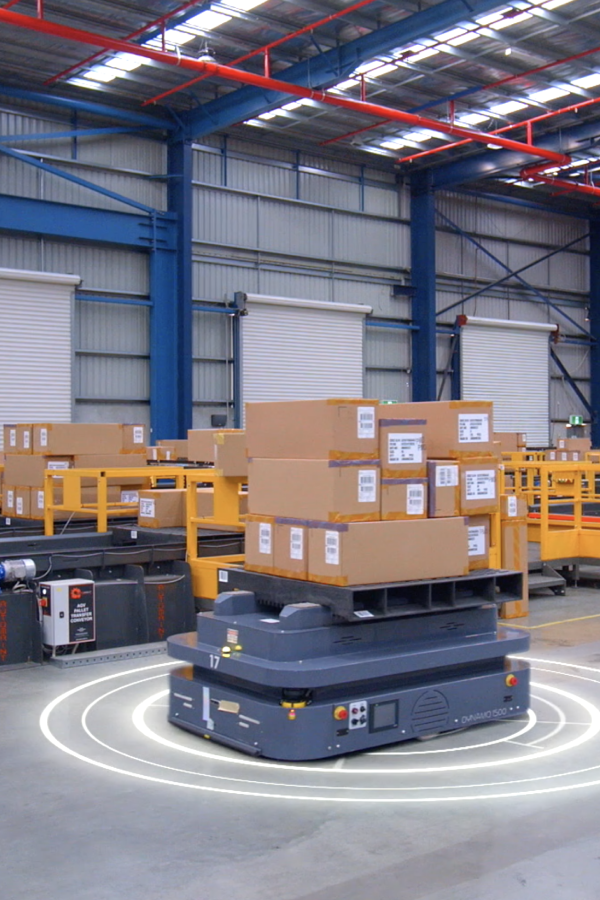
- Lower Capital costs: The initial investment and ongoing maintenance expenses of mobile robots like Dynamo are lower than those of traditional warehouse picking equipment.
- Increased Flexibility: They can be easily reconfigured and adapted to various jobs, improving their operational flexibility.
- Enhanced Efficiency: By optimizing routes and jobs with AI-powered navigation, they may quickly fulfil orders and experience less downtime.
- Enhanced Safety: These robots, which adhere to safety regulations, reduce the possibility of mishaps and injuries in the warehouse setting.
- Scalability: They can be easily scaled to meet changing demands and integrated into current systems with minimal disturbance.
- Lower Labour expenses: By eliminating the need for manual labor, repetitive job automation lowers labor expenses and the risk of human error.
- Better Space Utilization: Their compact design allows for more efficient use of warehouse space, enabling higher storage density.
- Real-time Data and Analytics: Equipped with sensors and connectivity, they provide valuable data for real-time monitoring and decision-making.
Wrapping Up
In a nutshell, traditional warehouse picking equipment has several difficulties regarding cost-effectiveness, efficiency, and flexibility.
The constraints of these traditional warehouse approaches may impede the development and adaptability of warehouse operations. But now that sophisticated technology has arrived, there’s a good substitute.
With Addverb’s advanced mobile robots, warehouse operations may move forward while also addressing the shortcomings of conventional technology.
By investing in these cutting-edge robots, businesses may lower expenses, increase safety and scalability, and improve operational efficiency.
Embracing this smart alternative can lead to optimized processes, better space utilisation, and improved overall performance.
It’s time to move beyond the limitations of the traditional warehouse and unlock the full potential of your warehouse operations with Addverb’s cutting-edge solutions.

Founded in 2016, Addverb offers complete robotics solutions for warehouse and industrial automation, with a strong global presence through its subsidiaries worldwide. The company provides a range of in-house automation products, including Autonomous Mobile Robots, ASRS, and sorting technologies. It serves over 350+ clients, including well-known companies such as Coca-Cola, Amazon, and DHL.
